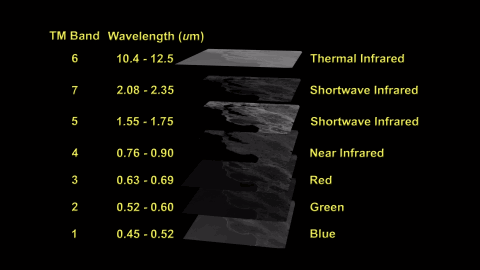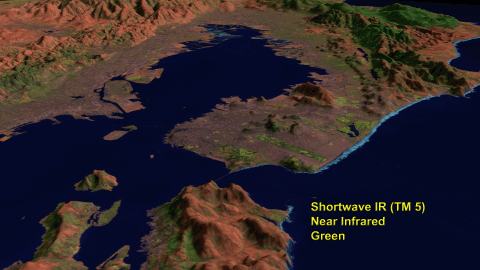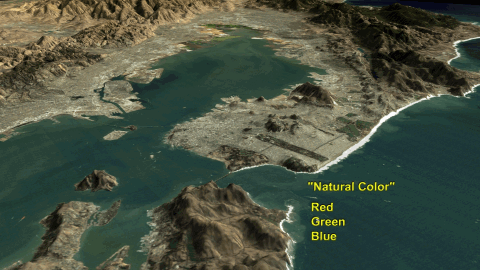Creating Landsat Images from Raw Data The spectral range of the Landsat Thematic Mapper (TM) instrument
The Thematic Mapper (TM) on Landsat 4 and 5 observes reflected sunlight from the Earth all the way from blue in the visible part of the electromagnetic spectrum to shortwave infrared well beyond the ability of the human eye to percieve. The TM instrument also can observe infrared radiation actively emitted by the Earth from thermal infrared radiation. Landsat 7 carries an improved version of the TM instrument, called ETM+. In addition to 7 channels of spectral data collected by the older TM instruments, ETM+ can observe in a special panchromatic band spanning the entire visible spectrum at twice the resolution of the TM bands (15 meter resolution instead of 30 meters). The ETM+ also has a major improvement in the resolution of the thermal band (60 meter resolution instead of 160 meters). A standard way to create images from raw Landsat TM and ETM+ data is to display a single band as a primary color, then combine different bands to create a full color image. Images shown here demonstrate combining three bands to make a color image using TM bands 5, 4, & 2, which covers a very broad range of the TM's spectral coverage. It is also shown in combination with a digital elevation model. Terrain data is shown with vertical features exagerated by a factor of three to emphasize details.
Technical notes:
|






